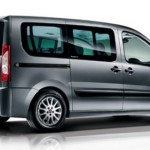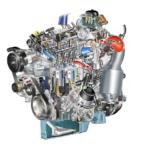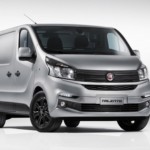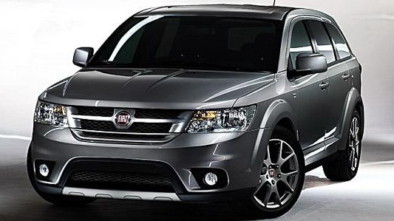Fiat Ritmo 1978 - 1988 - Model history
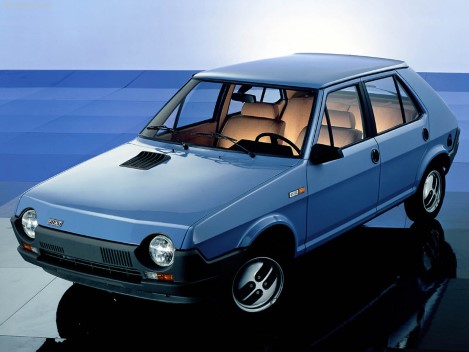
Fiat Ritmo
In response to the conventionally designed Golf of 1974, the Italians have already enriched the advanced technology with a modernist design, unfortunately, a sheet metal from the USSR.
Do not change what is successful, and the numbers in the label sound more subtle and more serious than the name. Finally, in the late 1970s, the term was Mercedes-Benz 200 D, Audi 100, BMW 320, Volvo 244, Peugeot 504… Fiat made a ‘boom’ model 128, which was especially attractive in the sporty versions of the Sport Coupe and 3P. In April 1978, the Fiat Ritmo was officially unveiled in Turin.
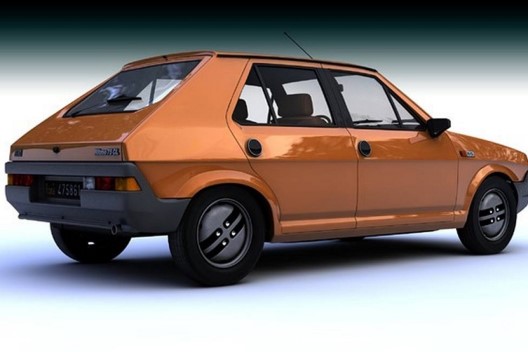
Fiat Ritmo
But in mid-March of that year, exactly four decades ago, journalists broke through everything important about the new 'space' car, the successor to the 128 model. What is important in that car is that it packed the (almost) excellent concept of Fiat 128 into futuristic design. Since at that time the Golf had already started working dar-mar in the compact class, the Italians eventually wanted to make a bigger and more serious car. With a length of 3937 mm, a width of 1650 mm and a height of 1400 mm, it was as much as 232 mm longer, 40 mm wider and as tall as the Golf. The wheelbase of 2448 mm is 48 mm longer.
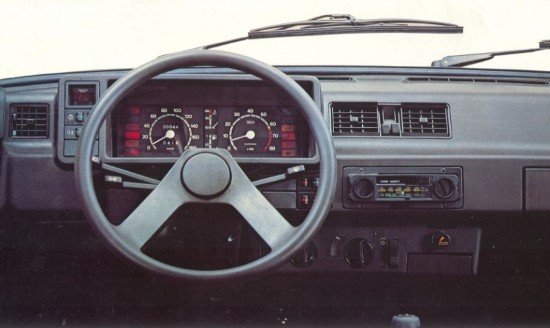
Fiat Ritmo
But let’s get back to the concept. Ritmo took everything significantly from the compact sedan Fiat 128, introduced in 1969, which won the title of 'European Car of the Year 1970', after which the legendary Zastava 1971 - 'Stojadin' station wagon was made in 101. There was independent suspension at the front and rear, a MacPherson strut at the front, with transverse shoulders and a ‘carrying’ balance bar, and at the rear the transverse shoulders stood on a transversely placed leaf spring.
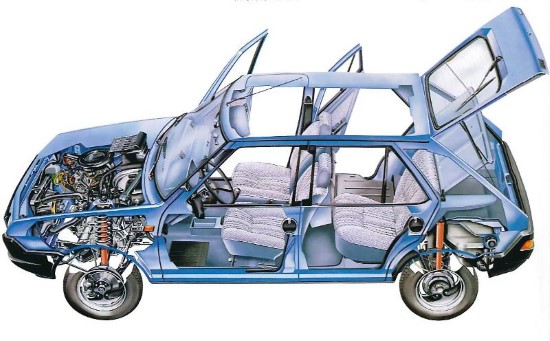
Fiat Ritmo
The in-line 4-cylinder with a gray cast iron block and an aluminum head had a camshaft in the head, driven by a toothed belt. The short-stroke versions (80 x 55,5 mm), with a volume of 1116 cc, were installed in the 128 and Stojadina once 'fired' the then respectable 55 hp. It has proven to be reliable and durable. Ritmo had a 'drilled' version of that engine, the bore increased to 86,4 mm, so with 65 hp and achieved then respectable performance (15,3 s, 150 km / h).
That engine was boosted to 1980bhp in 75, and in 1981, the 85ccs came in 1498, 12,2 and 163km / h, and sported 105 TCs with two camshafts, which already sported 9,5 and 180 km / h. This was not the end either. In 1982, with the introduction of version 60 from 1116 cc (in 1979 the same power came from 1049 cc), the ultra-sport Abarth 125 TC was presented for 8,0 and 190 km / h, and in 1983 it was increased to 130 TC.
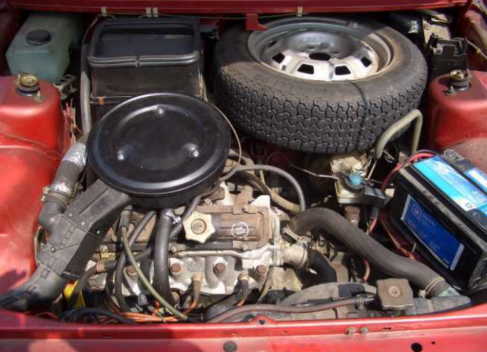
Fiat Ritmo
Ritmo, following the example of the Golf, received a diesel version 1980 with 1.7 hp in 55, which consumes an average of 6,4 liters. The 1985 redesign brings the 1.7 with 60 hp and the 1.9 Turbodiesel with 80 hp at 12,9 and 170 km / h. Italian 'antidote' for Volkswagen Golf, Opel Kadett and Ford Escort advertised as ‘robot-made by hand’ - at the time Fiat allegedly had the most modern factory in the world, it was reliable, but, especially since the mid-1980s, its reputation began to erode steel from the USSR, which Fiat received in cooperation 'deal' because of Lada (Zhiguli, or 'Russian' Fiat 124).
Ritmo, even more so his limousine version of the Regatta, came notorious for the bodywork that was ‘rusting already in the prospectus’. This was one of the reasons why Fiat irretrievably lost its previous market position. It was relatively rare in Yugoslavia because Zastava did not offer it in the dinar program, it had to be paid in foreign currency, unlike the much more frequent Regatta at that time. Nevertheless, Ritmo played a significant role in car racing in our country, and the legendary Mario Delmoro is especially remembered. It was produced in Spain as the Seat Ronda.
Provided with: autoportal.hr
Recommendation of similar texts:

Hi there, I am Mladen and I am an auto enthusiast. I started this blog years ago to help like minded people share information about latest cars, car servicing ideas, used car info, exotic cars, and auto technology. You will find helpful articles and videos on a wide variety of cars - Audi, Mercedes, Toyota, Porsche, Volvo, BMW and much more. Ping us if you have anything cool to share on latest cars or on how to make older cars more efficient, or just want to say hi!


